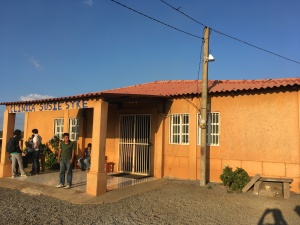Masaya volcano is an ideal candidate region to study vumo in general, and the factors underlying the development of vumo crises (episodes when vumo reaches dangerously high levels), with a possible view to subsequent generalisation to other volcanoes
Even though Masaya volcano itself has been scientifically investigated for several decades, little is known about its effects on air quality and the environment in populated areas
Within UNRESP foundation phase, we are investigating several different aspects of Masaya’s vumo in order to understand their physical impact on the populated areas
Impact on air quality and the environment
In February 2017 we installed 6 air quality monitoring stations in populated areas near Masaya volcano

The stations are monitoring major airborne pollutants in near-real time (SO2, NO, NO2, O3, PM10, PM2.5 and PM1). By collecting these data, we can identify for the first time the frequency, intensity and duration of high pollution episodes – factors which impact on human morbidity and mortality
We have also collected various samples of pollutants that cannot be measured in real time, such as hydrogen chloride (HCl), hydrogen fluoride (HF), and heavy metals
Samples were collected indoors and outdoors to assess the level of protection which buildings provide

Forecasting the air quality impact
We are investigating how the weather controls the dispersion of air pollutants from Masaya. The dispersion is simulated using the CALPUFF model. The model has been previously used to forecast SO2 air pollution in Iceland during the eruption of Holuhraun 2014-2015

Environmental and volcanological work is led by
Evgenia Ilyinskaya, University of Leeds
Sara Barsotti, Icelandic Meteorological Office
Harold Rodriguez, Instituto de Desarrollo Empresarial Asociativo (IDEAS)
Mark Richardson and James O’Neill, Centre of Excellence for Modelling the Atmosphere and Climate (CEMAC)
Tamsin Mather, University of Oxford
Jennifer Le Blond, Natural History Museum
Clive Oppenheimer, University of Cambridge
Guillermo Caravantes, Open University
The header image shows field measurements of aerosol particles in Masaya’s plume using technique called Sun photometry

